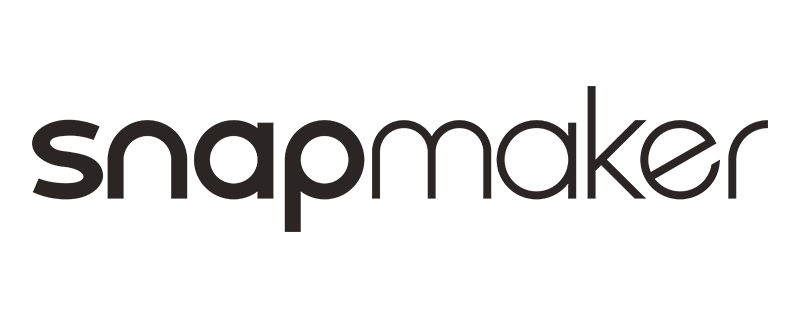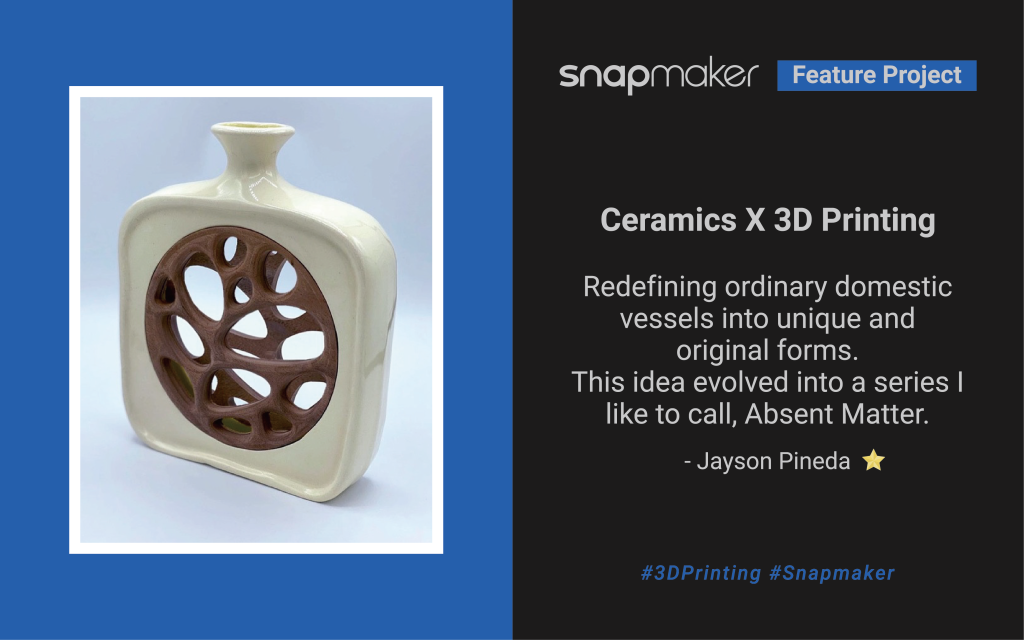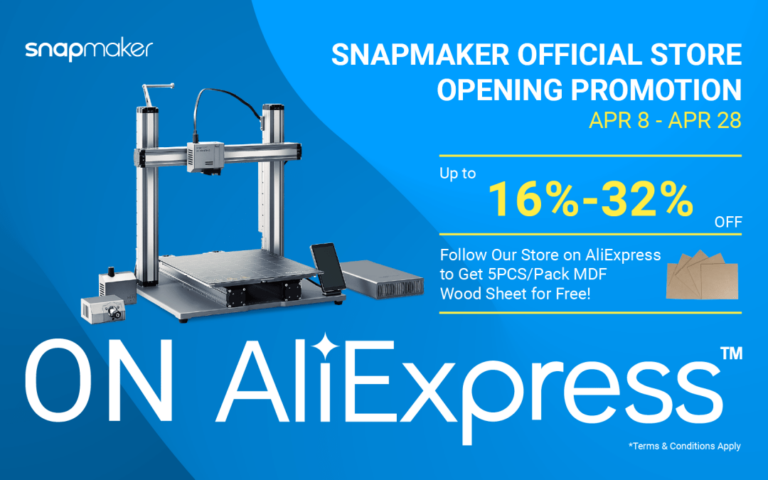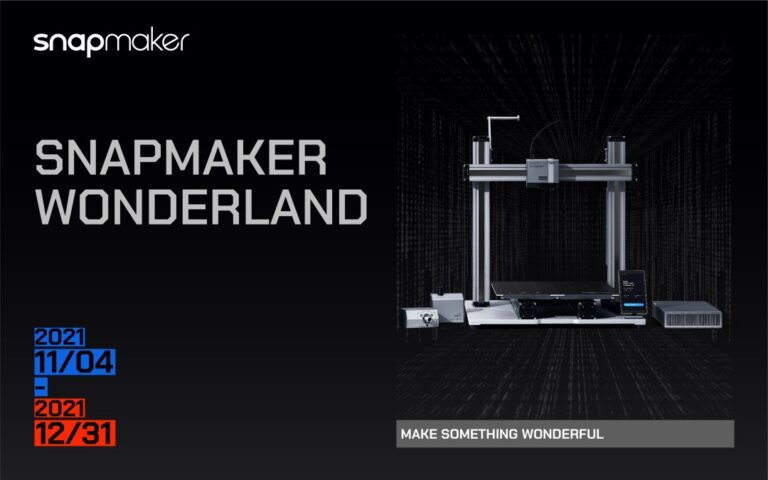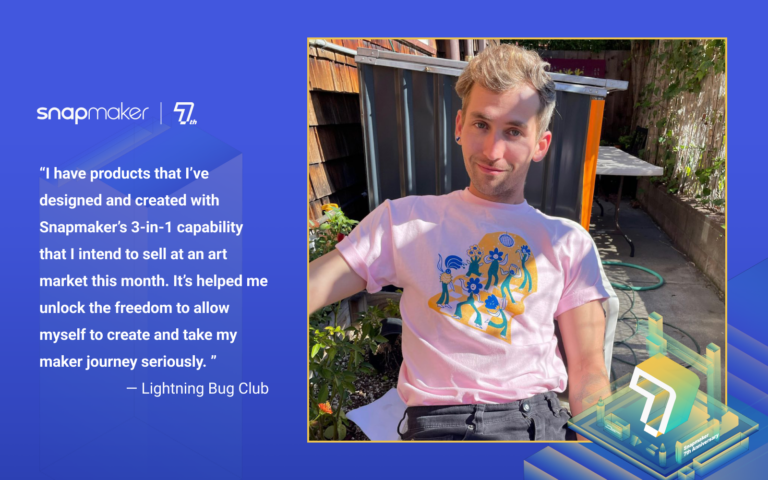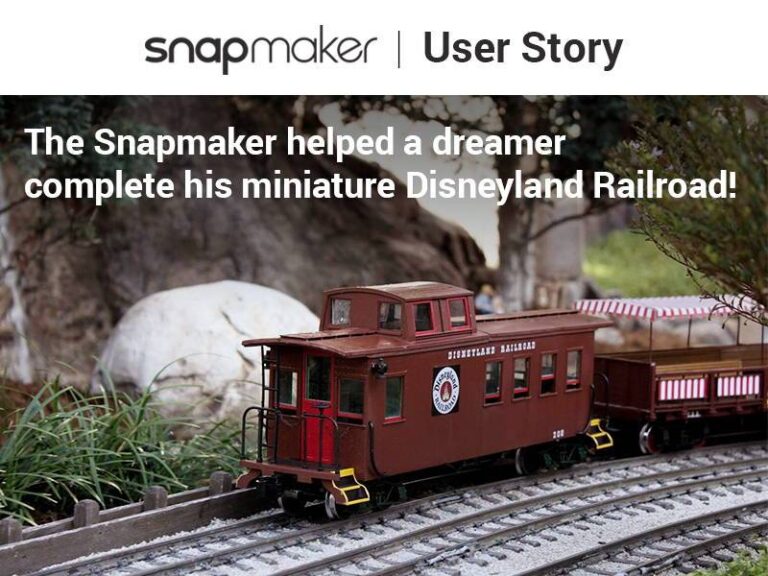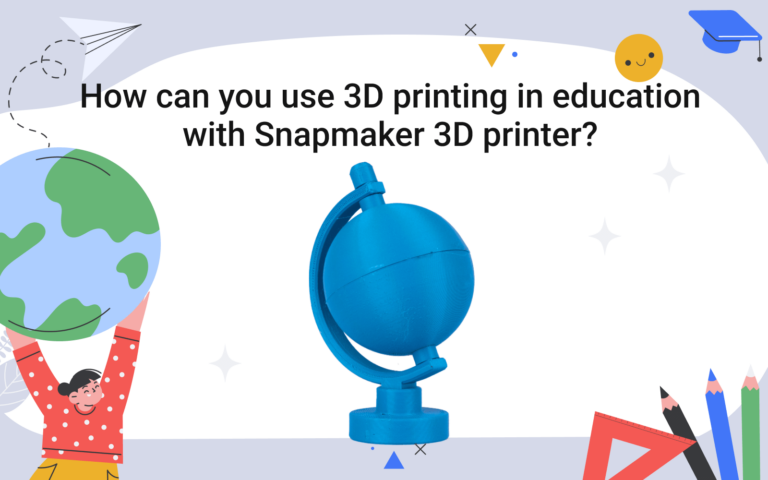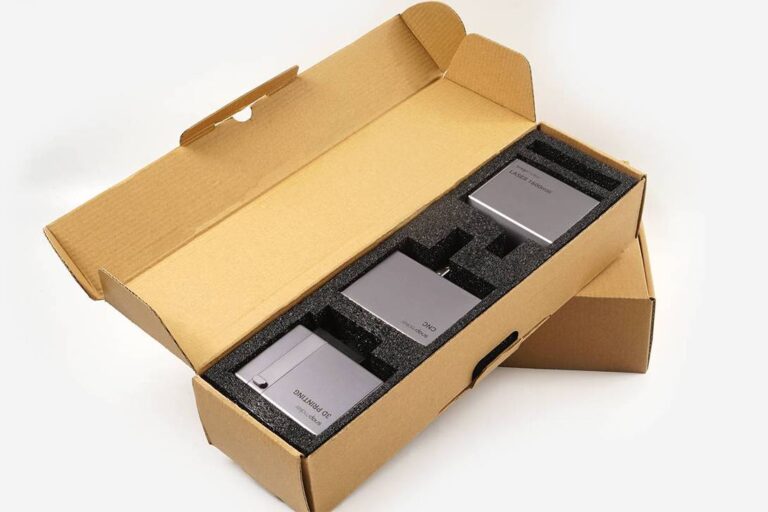StarMaker | Fusing Traditional Ceramic Processes with Modern Making Methods

Work designed, constructed, and printed by: Jayson Pineda (Instagram @jpinedapottery)
3D Printer: Snapmaker 2.0 A350 in the Enclosure
STL Files: Designed on Autodesk Fusion 360 and Autodesk Meshmixer
Materials for 3D Prints:
- Amazon ABS Filament White x1
- Amazon ABS Filament Orange x1
- Amazon ABS Filament Red x1
- Epoxy Glue x1
CNC Materials:
- Walnut Wood
Materials for Ceramic Forms:
- Ceramic Clay (Cone 5) 30lbs
- Various colors of Ceramic Glazes
- Ceramic kiln for firings
My name is Jayson Pineda and I am a California based Ceramic Artist and Visual Arts Educator.
From a young age, art itself was of great importance to me. I would draw, paint, sketch, craft, and perform. Basically, if it allowed me to be creative and express myself, I did it. I can lose myself for hours creating a piece and yet it will only feel as if minutes have gone by.
Inspired by my family and teachers I decided to continue my art education at California State University of Fullerton. At CSUF, I obtained my Bachelors in Art with an emphasis in Crafts and received my Teaching Credential in 2012. I was exposed to new methods and possibilities, but more importantly ceramics. Currently, I am continuing my education and about to complete my MFA in Ceramics at California State University Los Angeles.
But when it comes to 3D printing, I have no formal educational background. I received my first 3D Printer as a gift in 2016 and started off by printing shared STL files for games, home hacks, and cosplay. As an artist though, I wanted to create my own designs. So, I watched countless hours of YouTube tutorials to teach myself how to further utilize a 3D printer, create digital models, and modify STL files. I still have much to learn, but there are always great artists, content creators, and forums who are always ready to share their knowledge. Eventually, this led me to want to combine my knowledge of traditional ceramics with this newly acquired technological method of making. The Snapmaker 2.0 A350 has made this possible due to its large print size, ease of use, and amazing print quality.

I am interested and excited about redefining ordinary domestic vessels into unique and original forms with my work. This idea evolved into a series I like to call, Absent Matter, and a few of these pieces were just on display at The Loft Art Studios & Gallery in San Pedro California as a part of the 2021 Speaking/Unspoken Gallery show.
When we think of vessels, we think of them as being a complete and enclosed container, but within each of my pieces, I have chosen to utilize the popular negative-spaced voronoi patterns we tend to find within the 3D printing community. At first glance, these vessels appear to not be usable, but each one can be used for a specific purpose. The use of this pattern also emits a reference to technology, uses less filament, is a test of the printer’s capabilities, and creates a unifying aesthetics across the ceramic pieces.

The process for each vessel first begins with the idea of how the voronoi will invade or engage with the overall form. I start off by drawing a few sketches playing with cross sections, replacement parts, or even a complete devouring. The ceramic form is then constructed first on the pottery wheel, bisque fired, glazed, and then finally glaze fired before I could even begin the development of its printed counterpart. This is because during firings the clay will shrink and may even warp, which will determine how the digital component will need to be modeled and sized within Autodesk Fusion 360. The ceramic form and digital model are complete at this stage, but the model still lacks the voronoi surface. The file is then transferred into Autodesk Meshmixer, which is a program where I can manipulate the object’s digital wireframe. I simplify and reduce the wireframe by digitally removing them with a subtracting brush. The more wires that get removed, the larger the size of the negative spaced voronoi. The voronoi surface pattern is then applied, adjusted, and the model is now ready for printing.

During the printing stage, I pause the printer after just a few layers high and use a transparent template to ensure the print will fit the ceramic piece. Printing can take many hours and much filament that I would prefer to not waste the time or material just to find out later they do not fit. However, even when I finally have all the pieces successfully completed, I sometimes hesitate to permanently bond them together. I do this because I see these pieces as modular and in constant evolution as to what they could become. Pairing the ceramic form with a different printed component could completely alter the original design and create something entirely new.

Speaking of entirely new, I even started to dive into the fusion of ceramics with the Snapmaker’s CNC carving capabilities. The overall process is similar to doing it with 3D printing, but CNC carving was and still is entirely new to me. However, watching Rodney Shank’s tutorial for Relief Milling on Fusion 360 really helped me understand the entire process in order to create my most recent piece. The clay on this one did warp a bit, but a bit of sanding and a dremel did the trick.
Ultimately, I am very satisfied with the possibilities of the new Snapmaker. The capabilities really are endless. When you have an idea, you just got to go with it and not be put off by not knowing how to do something. The information is out there, and it may take some time until you get to where you want to be, but it is so satisfying when you accomplish it. I was so honored when I was invited to take part in the Speaking/Unspoken Gallery show last May, and it was such a huge success that it has inspired me to keep experimenting and moving forward.
If you are interested in watching this series evolve or to find out more about it, check out my Instagram @jpinedapottery
About StarMaker Program
StarMaker Program is a series of long-term plans aiming at stimulating the communication within our community as well as the connection between users and the Snapmaker team. Leading users who contribute to skills teaching, inspiration sharing, product feedback and community maintenance will be awarded star honor and other rewards.
